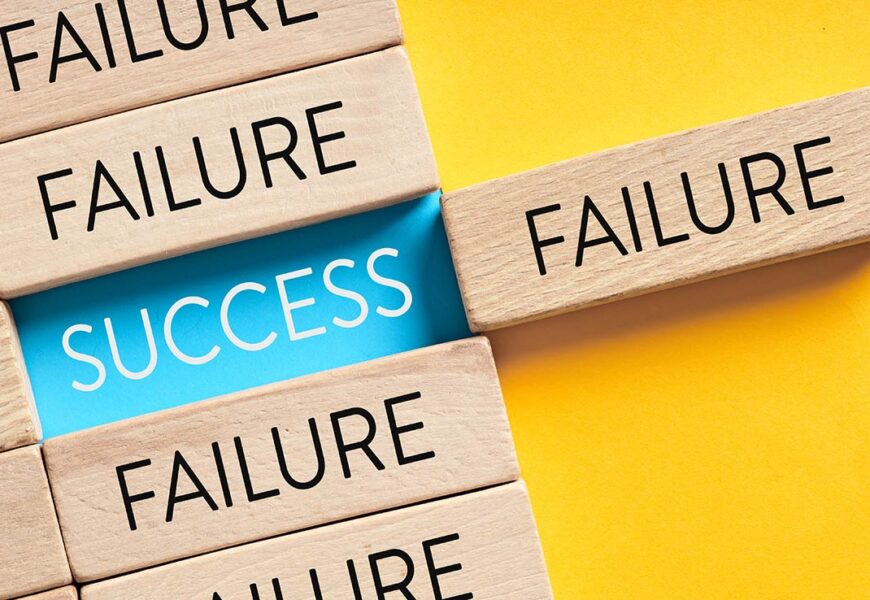The Tab Hoarder Test: Designing for Users wi Okay look. You’ve got a website. It’s clean (well, mostly), you spent three weeks fighting over button colors and the hero image and whether to use that smug photo of Dave with his arms crossed. You’ve got the “Our Work” section. It’s shiny. It’s smug. It screams “LOOK WHAT WE DID.” But… there’s this weird itch, this hum behind the curtain – no one ever talks about the stuff that exploded. Or fizzled. Or got stuck in contract limbo. Or, god forbid, where the client just plain hated it and said something soul-puncturing like “this isn’t at all what we wanted.”
So. Why would you show failure? Because honestly… people trust broken things more than flawless ones.
There’s something itchy and fake about perfection. You look at a portfolio and go, “Really? Every project went great? No weird client feedback? No midnight edits?” Come on. No way.
Failure Feels Human. And Uncomfortably Honest.
Okay, so you know that moment when someone tells you a story and you suddenly like them more because they didn’t try to come off perfect? Like-guy says he once got fired for confusing Helvetica Neue and Arial, and instead of judging him, you’re just like “yeah man, I’ve been there.”
That’s what an anti-portfolio does. You throw the curtain back and go “here’s some stuff that didn’t work and maybe we don’t even know why, fully.” It makes you squirm a little, which is good. Squirming means you’re not posturing.
A creative agency portfolio is a collection of your best work designed to showcase your expertise. Think of it as your résumé. But instead of applying for jobs, you’re pitching your services to potential clients.
https://blog.gainapp.com/creative-agency-portfolio/
We once pitched an app redesign to this non-profit, spent weeks crafting wireframes that were… I mean, honestly? Solid. But when we presented, they stared at us like we farted into a megaphone. Turns out, we misunderstood literally everything about their internal approval process. That job never launched. But we learned more from that screw-up than six clean launches combined.
Don’t Make It Look Pretty. Failure Should Feel… Off.
Here’s the thing – if you’re gonna show failure, don’t overpackage it. Don’t slap some soft shadow on it, crop the images like they belong on Behance, and throw in buzzwords like “learnings.” That’s just smuggling failure through the backdoor so it still looks cool.
Make it uncomfortable. Let it show. The rough edges. The jaggedy slide decks. Maybe even show the version the client hated. Not in a spiteful way. More like… here’s where it went sideways, and here’s the thought that got us there. Even if the thought was dumb.
Failure is accompanied by a variety of emotions: embarrassment, anxiety, anger, sadness, and shame, to name a few. Those feelings are uncomfortable, and many people will do anything they can to escape feeling emotional discomfort. A 2017 study published in the Journal of Behavioral Decision Making says you shouldn’t try to slough off feeling bad after failure. Researchers discovered that thinking about your emotions—rather than the failure itself—is most helpful.
https://www.verywellmind.com/healthy-ways-to-cope-with-failure-4163968
I once saw an agency post a “Lost Client” section. Just raw. One-liners. “Tried to build a loyalty app for a restaurant chain. They ghosted us after MVP. We think it was the logo. Or maybe the pricing model. Still unclear.” That’s genius. And it stuck in my brain way more than their actual portfolio.
But What If It Makes Us Look Incompetent?
Ah, yes. That gremlin voice. The “what if people don’t hire us” panic.
Well, okay, sure. If your anti-portfolio is just one flaming dumpster after another, yeah, maybe take a beat. But if you’re honest and reflective? It shows you care. It shows you’re not asleep at the wheel. That you’ve been through the fog and came out with your eyebrows singed but still walking.
People don’t expect agencies to be perfect. They expect them to be aware. There’s a difference. If you’re the kind of crew who pretends every pitch was a touchdown, you’re either lying or deluded. Or you’re so safe and boring that nothing ever crashes, which, honestly, might be worse.
Structure? Or… Mess? What Works Better?
Okay, here’s a paradox. You want your anti-portfolio to feel messy, like a drawer full of half-used notebooks. But also not so chaotic that it reads like a confession to the design police.
Some folks do bullet points – Problem / What We Tried / Why It Failed / What We Think Now. Others write it like a diary entry. “August 2022: Client hated everything. We argued about the tone of red for 3 weeks. Eventually we realized the whole thing was off. Not just the red. Everything.”
No right way. But if it sounds too polished, like someone ran it through PR-filters and SEO-mousetraps, it’s pointless. Let it wobble.
Some Projects Just Die. And That’s Okay to Admit.
This might be the hardest one to type. Projects die. Sometimes because the client’s broke. Sometimes because of internal team drama. Sometimes because the core idea… wasn’t as good as it sounded at 2am on Slack.
I worked on this social thing – meant for dog parks. Don’t ask. Anyway, two months of work. User testing. Branding. Microcopy that made us cry-laugh. Then one day, the client says: “We got offered a job in Montana and we’re moving. Project’s off.” That was it. Boom. Gone.
Do you put that in a portfolio? Nah. But the anti-portfolio? Hell yes.
What You Actually Gain From Sharing This Stuff
Trust. Weirdly, a kind of credibility. People start thinking, “If they’re this open about what went wrong, imagine how open they’ll be if something goes sideways with my project.”
It also scares off the wrong clients. The ones who expect a straight line from kickoff to champagne toast. The ones who’d rather pretend messy doesn’t happen. You want those folks to run. Go on. Shoo.
Also? It’s good for your team. Seeing the bad stuff aired out. It builds internal honesty. Cuts down the postmortem blame-fests. Gives people a shared language for “yeah we kinda messed that up, huh?”
Closing or Whatever This Is
Look, you don’t need to go plastering FAILURE in 72pt type across your homepage. But a small quiet corner on your site? Where you talk about projects that didn’t land, clients who walked, ideas that flopped? That’s rare. That’s brave. That’s, dare I say, refreshing.
Just don’t try to make it sexy. Let it be awkward. Real. Kinda uncomfortable. Like that one friend who overshares but also kinda makes you feel seen.
And maybe – maybe – people will trust you more for it. Or maybe they’ll think you’re weird. Which, honestly, is still better than being forgettable.
Last modified: July 22, 2025

